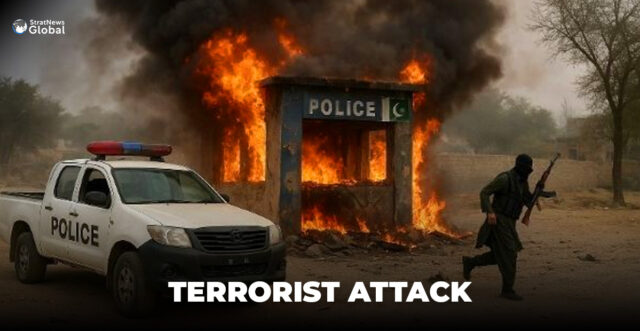On Saturday, terrorists launched an assault on a police training school in the Ratta Kulachi area of Dera Ismail Khan district in Pakistan, killing seven officers and at least six attackers, according to media reports.
The assailants, described as Khawarij by the Central Police Office, rammed an explosives-laden truck into the school’s main gate, triggering a massive blast, Dunya News reported.
Heavily armed attackers wearing multiple uniforms then stormed the facility, prompting a fierce gun battle with police personnel.
Officials said police officers fought back with “great bravery,” engaging the terrorists in an extended exchange of fire as the attackers hurled grenades inside the compound.
Seven officers were killed in the fighting, while several others sustained injuries and were taken to nearby hospitals for treatment.
This incident is part of a broader surge in terrorist activities in the region.
Authorities responded swiftly to the assault, cordoning off the area and conducting clearance operations to ensure no further attackers remained.
They said around 200 trainee officers and staff members were safely evacuated from the premises.
Continuing Threat From Terrorist Groups
Inspector General of Khyber Pakhtunkhwa Police Zulfiqar Hameed told Pakistani media that the area had been cleared and that a search and clean-up operation was underway.
The attack in Dera Ismail Khan reflects a continuing threat from terrorist groups in Pakistan’s northwest, particularly in Khyber Pakhtunkhwa province. Security analysts say the region has long been a hotspot for insurgent activity.
Over the past decade, attacks on police academies and checkpoints have been used by terrorists to undermine state authority and create instability in the area.
The Pakistani government has repeatedly pledged to strengthen counterterrorism measures, including intelligence-sharing and military operations along the Afghanistan border, to curb the influence of extremist networks.
Analysts warn that despite these efforts, the persistence of local support networks and porous borders continues to pose a challenge.
(With inputs from IBNS)





